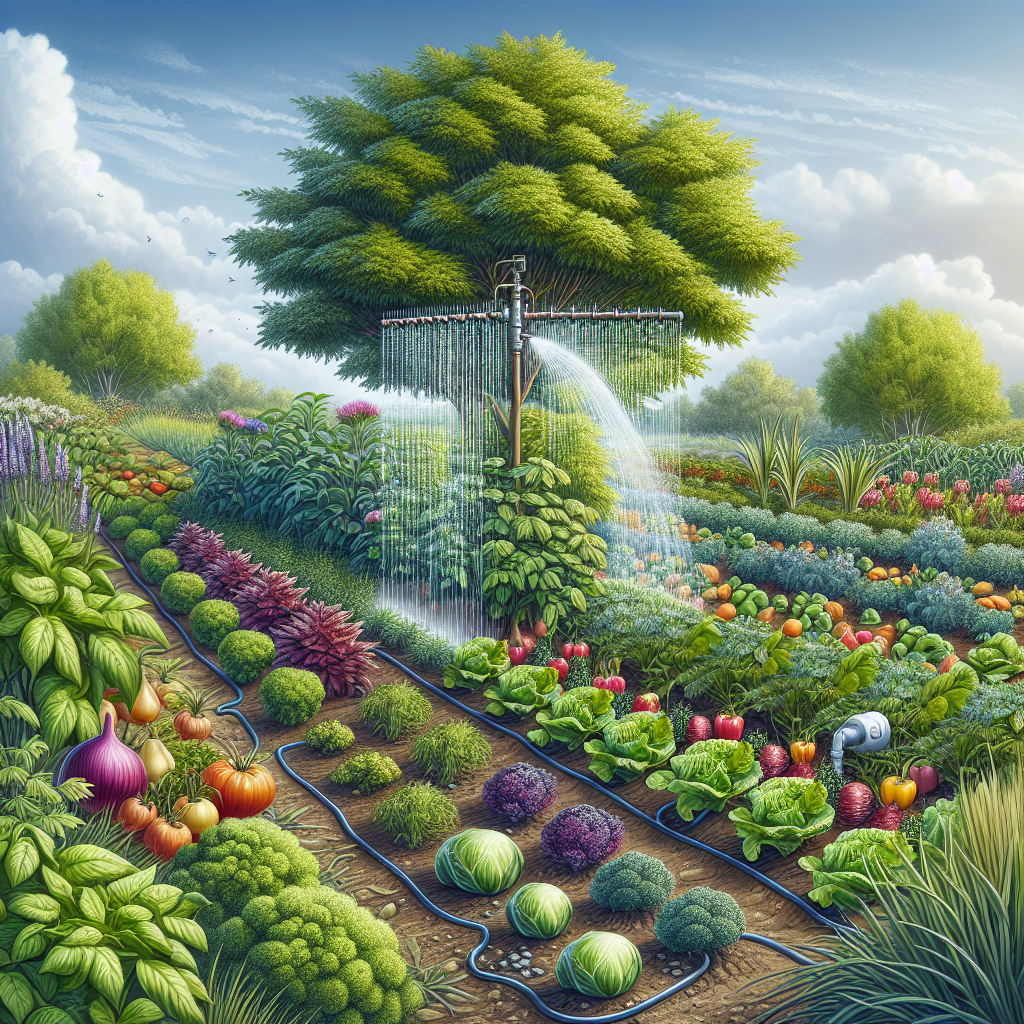Table of Contents
When it comes to sustainable gardening practices, slow drip irrigation is a game-changer. This method of watering plants involves delivering water directly to the roots at a slow and steady pace, minimizing water waste and promoting healthier plant growth. Slow drip irrigation has numerous benefits for both the environment and gardeners alike, making it a popular choice for those looking to care for their plants in an eco-friendly way.
In this article, we will explore the many advantages of using slow drip irrigation in your garden. From conserving water to reducing weed growth, this method offers a range of benefits that can help you achieve a thriving and sustainable garden. So, read on to discover why slow drip irrigation is the way to go for environmentally conscious gardeners.
The Benefits of Slow Drip Irrigation
Slow drip irrigation offers several key advantages that set it apart from traditional watering methods. Here are some of the top benefits:
1. Water Conservation
One of the biggest advantages of slow drip irrigation is its ability to conserve water. By delivering water directly to the roots of plants at a slow rate, this method reduces evaporation and runoff, ensuring that every drop is used efficiently. This not only helps save water but also promotes deeper root growth as plants are encouraged to seek out moisture below the surface.
2. Reduced Weed Growth
Traditional sprinkler systems can often lead to increased weed growth as they water not only your plants but also the surrounding soil. Slow drip irrigation targets the root zones of your plants specifically, minimizing the amount of moisture available for weeds to germinate and thrive. This can save you time and effort in weeding, allowing you to focus on enjoying your garden rather than constantly battling unwanted plants.
3. Healthier Plants
By providing a consistent supply of water directly to the roots, slow drip irrigation helps keep your plants healthy and thriving. This method prevents overwatering or underwatering, both of which can lead to stressed or damaged plants. With slow drip irrigation, you can ensure that your plants receive just the right amount of water they need to flourish.
4. Cost-Effective
While installing a slow drip irrigation system may require an initial investment, it can actually save you money in the long run. By using water more efficiently and reducing water waste, you can lower your overall water bill while still maintaining a beautiful garden. Additionally, the reduced need for herbicides and pesticides due to decreased weed growth can also lead to cost savings over time.
How to Implement Slow Drip Irrigation
Now that you know about all the benefits of slow drip irrigation, you may be wondering how to get started with this eco-friendly watering method in your own garden. Here are some steps to help you implement slow drip irrigation effectively:
1. Choose Your System
There are various types of slow drip irrigation systems available on the market, from soaker hoses to drippers and micro-sprinklers. Consider your garden’s layout and watering needs when selecting a system that works best for you.
2. Plan Your Layout
Determine where you want to place your slow drip lines based on the location of your plants and their watering requirements. Keep in mind that different types of plants may need different levels of moisture, so plan accordingly.
3. Install Your System
Lay out your chosen slow drip lines around your garden beds or containers according to your layout plan. Secure them in place with stakes or clips as needed. Make sure all connections are tight and free from leaks before turning on the system.
4.A Adjust Water Flow Rate
To ensure that each plant receives an adequate amount of water without causing runoff or puddling, adjust the flow rate on each line as necessary.Follow up by monitoring your system regularly; taking note if any adjustments needed when seasons change.
Frequently Asked Questions (FAQ)
“Does Slow Drip Irrigation Work for All Types Of Plants?”
Absolutely! Slow Drip Irrigation is versatile as it provides controlled amounts individualized support critical during germination-specific lifecycles.
“Are There Any Drawbacks To Using Slow Drip Irrigation?”
The only downside could be its initial setup costs; so if cost-efficient gardening maintenance practice is lied within planting zone consider all aspects before investing into such equipment.
“Can I Combine Slow Drip Irrigation With Other Watering Methods?” ,
Absolutely! Feel free combining sprinklers with soaker hoses depending on what works best with conditions watering needs plant variety gardens.
“How Often Should I Water My Plants Using Slow Drip Irrigation?” ,
The answer depends on factors such as weather conditions season soil type once established consider checking moisture levels determining best schedule ideal growing environment
In Conclusion,
Sustainable gardening practices are essential not only for our own well-being but also for future generations ensure we care environment adequately possible Leveling up gardening practices by exploring innovative techniques like fits perfectly enables more fruitful growing experiences yielding beautiful thriving green spaces
By adopting methods such helping conserve precious resources reducing overall costs while promoting healthier offering convenience efficiency ease management Ultimately contributing positively environment overall well-being planet beings alike














